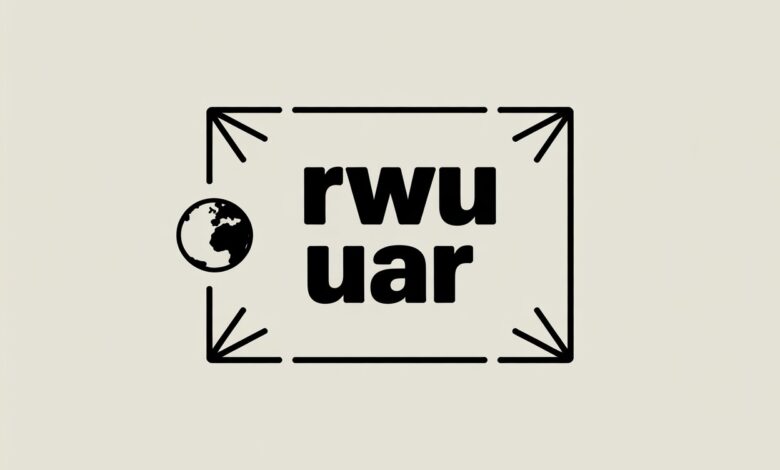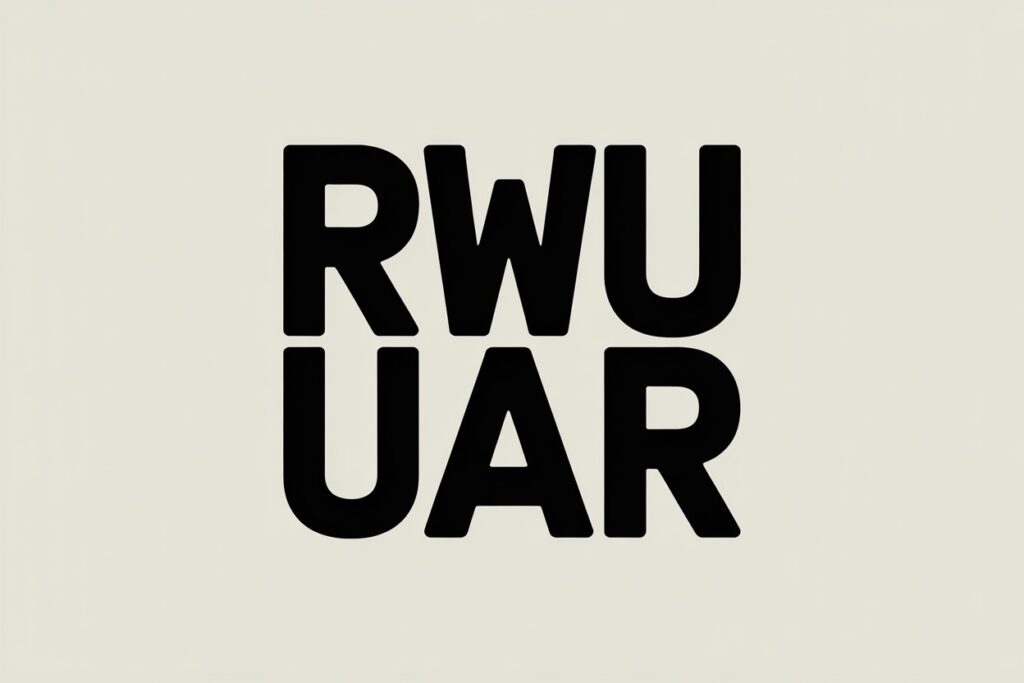Rwu Uar Explained Simply: The 2025 Guide to Working Smarter, Safer, and Faster

“Rwu Uar” looks like a puzzle at first. But it is really a helpful idea with many uses. In some places, RWU means a university or a “ready when you are” mindset. UAR can mean applied research, user access request, or a unified automation resource. Sounds like a lot, right? Here’s the easy way to see it: Rwu Uar is a short label people use for clear work, smart access, and action that fits real life.
Think of it like a pocketknife for modern work. You open the tool you need, when you need it. In a college lab, Rwu Uar points to hands-on projects that link class work with real jobs. In an office, it points to simple systems that give the right people the right access at the right time. In a startup, it points to one hub that runs tasks, messages, sales, and support. Same label. Many uses. One goal: get real results without the mess.
Why does Rwu Uar matter in 2025?
Work moves fast. Rules change. Teams are remote. Data is everywhere. It is easy to feel lost. Rwu Uar helps you set a small, clear frame. You define what “real world” means for you. You decide who should act, and how. Then you ship, learn, and improve. That is why the term shows up across schools, tech, and business. It brings focus when things feel complex.
There is also a trust side. People want tools they can trust. They want access that is safe. They want steps they can follow. Rwu Uar supports that. It suggests plain roles, clear rights, and simple flows. So users feel safe. And teams move faster with less risk.
The many meanings — and how to use them

Rwu Uar is poly-meaning. That is a big word. Let’s say “multi-use” instead. In schools, RWU can be a real university name. UAR can be “applied research.” Together, Rwu Uar points to learning by doing. In IT, RWU can hint at “read/write unit.” UAR can be “user access request.” There it points to who can read or change a system. In business, Rwu Uar can mean a single platform that runs tasks and helps teams sell, serve, and report. Same letters. New lens each time.
Do you have to pick one meaning? Not at first. Start with your goal. Do you want better learning? Safer access? Smoother work? Then pick the meaning that fits that goal. You can even use two at once. A school can blend applied research with safe access. A startup can blend a “ready when you are” mindset with a one-hub workflow. Rwu Uar is flexible like that.
A short story to make it real
Meet Hira. She leads a small health tech team. Her devs are fast. Her nurses are busy. Her data rules are strict. She needed a plan that was both quick and safe. She chose a Rwu Uar path. First, “ready when you are”: small releases every week. Second, “user access request”: nurses could request access in two clicks with clear approvals. Third, “applied research”: a student group helped test new screens in a clinic lab.
In three months, the app felt smoother. Access errors dropped. Nurses said tasks took less time. Hira did not chase trends. She used Rwu Uar as a simple frame. It kept the team focused on real users, safe steps, and small wins. That is the whole point.
Rwu Uar in schools and labs
In the academic world, Rwu Uar often means “applied research” or “undergraduate academic research.” The idea is simple. Students learn by doing real projects. They test ideas with industry partners. They write, build, and measure. The goal is not just grades. The goal is skills that work outside the classroom.
How do you use it? Start with a live problem. A factory has waste. A town needs better bus data. A clinic wants faster check-in. Students map the problem, design a test, and track results. They report what worked and what did not. Rwu Uar here is not fancy. It is steady. Clear questions. Small trials. Honest results. That makes learning stick.
Rwu Uar in startups and small teams
In startups, Rwu Uar often points to one hub that runs work. Think tasks, emails, sales, support, and reports in one place. The aim is speed with control. Founders do not have time to jump across ten apps. A Rwu Uar hub keeps the “ready when you are” vibe. You can launch fast but still keep track of who did what and why.
Here is a simple path. Start with three flows: lead to demo, issue to fix, idea to ship. Put each flow in the same hub. Set clear roles. Sales opens leads. Support opens issues. Product opens ideas. Everyone can see status at a glance. Simple roles. Simple fields. Clear owners. Rwu Uar makes the path visible, so the work does not hide in chats or email.
Rwu Uar in IT and security

Now let’s look at access. In IT, Rwu Uar can mean “user access request” tied to “read/write units.” The goal is safe and fast access. You do not want people stuck. You also do not want open doors. So you use a small set of rules. Who are you? What do you need to read? What do you need to change? For how long? Each request shows those parts in plain words.
Make it easy to do the right thing. Use templates for common roles. Set time-boxed access for risky tasks. Log all changes. Let managers approve with one click. When someone moves teams, trigger a review right away. Rwu Uar is not about heavy gates. It is about clear, fair gates that match real work.
Rwu Uar in data and revenue
There is a data side too. Some teams read Rwu Uar as “revenue unit” and “user activity report.” That blend turns raw clicks into insight you can use. Ask simple questions. Which action links to paid plans? Which feature drives repeat use? Which steps cause drop-off? Track those in a weekly loop. Share one page with the whole team.
Keep the math simple. Pick five core events. Tie them to one clear revenue unit, like “active seat per month.” Then test one change at a time. Shorten a form. Move a button. Add a tiny guide. Measure for one week. Do more of what works. Stop what does not. That is Rwu Uar as a calm, steady habit.
A checklist you can copy today
Here is a quick Rwu Uar checklist you can try with your team. It works whether you run a class, a help desk, or a small product:
- Define one real goal for the next four weeks.
- Map who needs to read and who needs to change.
- Set a simple access request with two fields and one approver.
- Pick five key user actions to track.
- Ship one small change each week.
- Review the numbers every Friday.
- Write one page on what you learned.
Use it for one month. See what moves. Keep what helps. Drop the rest. That is the spirit of Rwu Uar: small steps, real use, clear results.
How to set up Rwu Uar for your team
Now that you understand what Rwu Uar means, let’s see how to bring it into daily work. The best part? You don’t need fancy tools. You just need clear steps, good habits, and steady follow-up.
Start small. Pick one process that always feels slow or confusing — like how people ask for access, how you share updates, or how you track small wins. Use the Rwu Uar mindset to fix that. Create one short form, one page of notes, or one shared dashboard. Make it easy for everyone to see what’s happening.
Then, improve it each week. Ask: Did this help? What got stuck? What can we make faster or simpler? When people feel seen and included, they will support the system more. That’s how Rwu Uar grows — not through rules, but through rhythm.
Common mistakes to avoid
Even though Rwu Uar sounds simple, some people still miss the point. They overthink it or make it too complex. Let’s fix that early.
Mistake 1: Too many meanings at once.
Remember, Rwu Uar has many sides — school, business, IT, AI. But don’t use them all at once. Pick one side that fits your goal. Keep it clean.
Mistake 2: Making it heavy.
Some teams turn Rwu Uar into a long policy list. That kills the flow. Keep the steps short and the checks easy. One form, one page, one clear owner — that’s enough.
Mistake 3: No follow-up.
Even a simple system needs care. Review how it works every few weeks. Ask the team if they find it helpful. If not, adjust it. Rwu Uar works best when it stays alive and flexible.
Real-world examples

Let’s take a few quick examples so you can see Rwu Uar in action.
In education:
A university launched a student innovation lab using the Rwu Uar model. Students handled real projects for local companies — tracking research, testing small fixes, and sharing weekly results. It turned theory into practice and boosted job skills.
In business:
A startup used Rwu Uar as a one-stop work hub. Sales, support, and design all shared one tool. Access was automatic, and roles were clear. The result? Less confusion, faster handoffs, and happier clients.
In IT:
A bank adopted Rwu Uar for user access requests. They built a two-step form for access approvals. No emails, no waiting days. It saved hours each week and improved security at the same time.
Each story shows one thing — Rwu Uar works best when it makes real work easier.
The future of Rwu Uar
Rwu Uar is not a fixed formula. It’s a growing idea that changes with time. In 2025, it’s already part of AI, automation, and education. But in a few years, it may also shape how we connect people and machines in daily life.
Imagine a world where Rwu Uar helps a robot nurse understand what a patient needs, or where a small business runs everything from one simple hub. The goal stays the same — make things easy, fair, and real.
So, if you are building something new, keep this in mind: Rwu Uar is not just tech talk. It’s a way to blend readiness, safety, and smart action.
Final thoughts
If you remember only one thing, let it be this — Rwu Uar is about clarity. It helps you see what matters and act with purpose. It can fit in a school, a startup, or even your daily routine.
Start with one task. Make it cleaner. Share it. Review it. Then grow from there. Rwu Uar isn’t about being perfect. It’s about being clear, steady, and real.
When things feel messy or hard to track, think: “What would Rwu Uar do here?” The answer will likely be simple — make it smaller, safer, and more useful.
That’s the true power of Rwu Uar — ready when you are, useful where you are.



